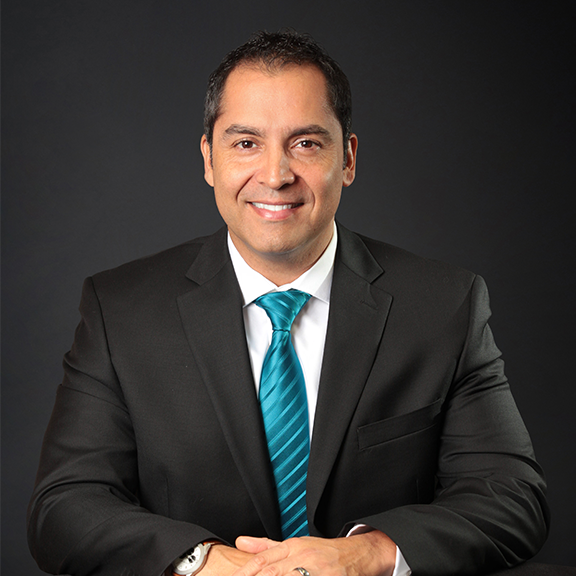Engaging Communities with Information:
Why Monitoring Aircraft Noise Matters
Written by: Christian Valdes with contributions from Rich Barone and Ian Guy
 The L&B LAB Team would like to thank our outgoing President Mark Perryman for his support of the LAB since its launch
The L&B LAB Team would like to thank our outgoing President Mark Perryman for his support of the LAB since its launch
in March 2020. Over Mark’s career, spanning over 31 years at L&B, he has fostered an entrepreneurial spirit that permeates
throughout the company. We wish Mark all our best in the next chapter of his career and look forward to working with our
new President Rob Adams to push the envelope in thought-leadership and innovation.
Aircraft noise is generally the number one complaint of airport-adjacent communities and one of the more complex challenges for airports and airlines to navigate as they work to add and improve their services. Airports are challenged to find a balance between the increasing demand for air travel and the quality of life of surrounding airport communities. When residents contact the airport with questions about noisy flights, airports are also challenged to provide meaningful answers, which may be difficult and time-consuming to find if the flight information is not readily available. The pandemic has compounded these challenges as many communities experienced months of fewer aircraft operations and less noise only to have, in many instances, travel surge back to prior levels or beyond 12 to 18 months later. The results of this perceived increase in air traffic have led to an even greater public sensitivity to aircraft noise, an increased need to accurately monitor noise levels and flight operations, and an increased need to devise measures to help mitigate aircraft noise impacts on communities; technology and accurate information can help airports navigate through these challenges.
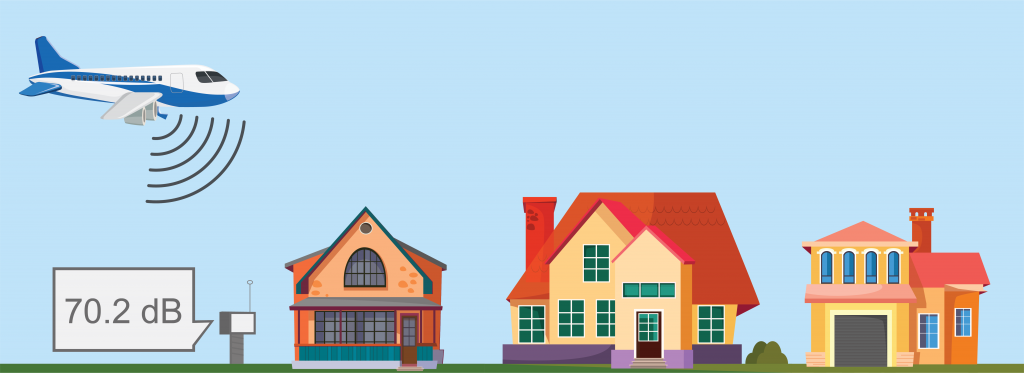
Overview of Noise & Mitigation Measures
Airport operations impact residential areas at various distances from the airport. These impacts range from an occasional low and loud overflight to a constant stream of aircraft on a concentrated flight path. An increasing level of annoyance of airport community residents has led to an increasing number of residents that contact airports for information about noisy and intrusive aircraft operations. Airports that have the tools to respond to noise complaints from community members with information which is often specifically related to the aircraft that caused the noise complaints. However, airports that do not have the tools to provide community members with specific information often respond with simply general information about airport operations that could have possibly caused the noise complaints. This leaves the community without a complete picture of what is causing their aircraft noise annoyance and what the airport is doing to mitigate the noise.
Airports can mitigate noise impacts on surrounding communities in various ways including the implementation of preferential runway use programs, noise abatement flight corridors, and the installation and operation of noise and operations monitoring systems that allow airports to not only track and identify aircraft operations, but also to monitor pilot performance of noise abatement procedures. These monitoring systems produce reports that can be shared with stakeholders and published online for public viewing. Additionally, some web-enabled systems allow the public to “self-investigate” their noise concerns and submit complaints online.
Our recent research with the Airport Cooperative Research Program (ACRP)1
Aircraft noise monitoring technology has been around for over 50 years. In fact, documentation on airports using these types of systems date back to 1960’s at John F. Kennedy International Airport (JFK), John Wayne Airport (SNA), and Santa Monica Airport (SMO). The systems at SNA and SMO were installed to enforce single event noise limits. Today, there are over 90 Noise and Operations Monitoring Systems (NOMS) and over 100 stand-alone flight tracking tools installed at U.S. airports that supplement small and large noise management program efforts.
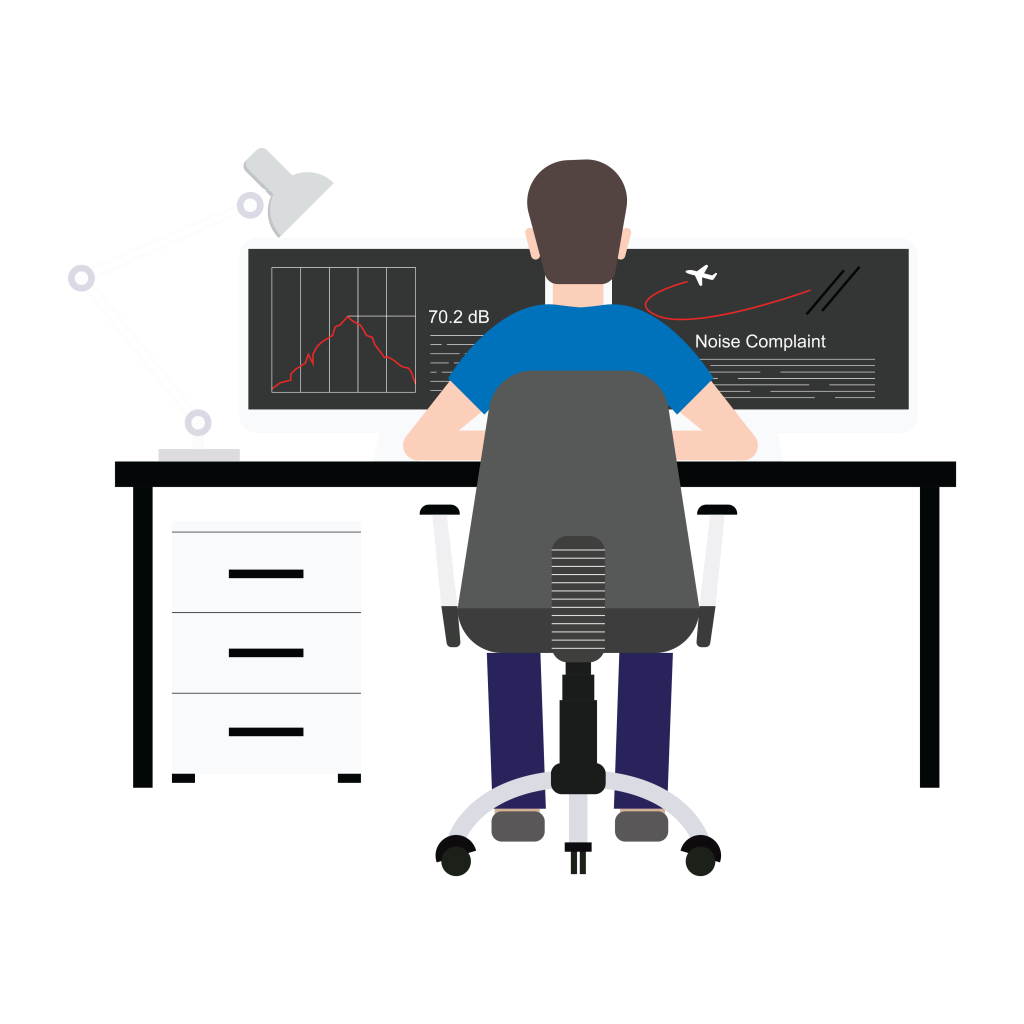
The ACRP selected L&B to conduct Report 237: A Primer and Framework for Considering an Airport Noise and Operations Monitoring System (NOMS). This Primer describes a methodology to assist airports and other stakeholders decide whether a NOMS is appropriate for their situation, evaluate the benefits and costs of acquiring and updating such system, and determine the general resources needed to acquire, operate, and maintain the system. In addition to the information gathered through a literature review, the research team contacted NOMS vendors, airports that operated a NOMS, and airports that did not operate a NOMS. Results showed a variety of information including the current and future state of NOMS and how airports address their noise issues by using noise monitoring data, flight tracking data, other off-the-shelf products, and other proprietary solutions.
Our research found the handling of noise issues is unique to each airport’s situation. Airports handle noise issues in various ways based on several factors including local regulations or agreements; available funding and staffing resources; airport planning and public outreach objectives; and the public’s need for information and engagement. Whether an airport should operate a NOMS which includes noise monitors, a flight tracking system, and a noise complaint database largely depends on the type of information airport staff need to provide to other airport staff and the public.
Case studies showed some airports without a NOMS found relatively simple and inexpensive flight tracking systems were capable of providing sufficient information to achieve their complaint handling and public engagement objectives. Whereas, other airports without a NOMS continued to meet their complaint handling and public engagement objectives without a NOMS or flight tracking system.
Through our investigation, L&B research concluded that airports procured a NOMS as part of either reactive or proactive strategies.
- Reactive strategies, which responded to aircraft noise issues as they became apparent.
- Proactive strategies, which allocated airport resources to prepare the airport and staff to handle potential noise issues before arising issues became apparent.
On the basis that a proactive approach leads to better outcomes, airport management should pay close attention to events that may increase aircraft noise complaints and aircraft noise annoyance when considering a NOMS as part of their noise handling strategy.
During the preparation of the Primer, two major events occurred that may have an impact on the future need and use of NOMS at any size airport:
- The Coronavirus (COVID-19) Pandemic
- The Federal Aviation Administration’s Neighborhood Environmental Survey (NES).
The NES results showed that more people are annoyed by aircraft noise compared to 50 years ago, and that the DNL 65 may be an outdated threshold of significant noise impact. The increased aircraft noise-related annoyance could potentially increase public pressure on airports to verify the location of the DNL 50 through 65 and increase public pressure on airports to perform aircraft noise and operations analysis.
The combination of the perceived increase in airport operations due to the lifting of travel restrictions related to the COVID-19, and the NES findings related to an increase in aircraft noise annoyance may compound the public’s interest in engaging airports to solve noise problems. L&B findings reveal this will likely lead to an increase in annoyance and its related aircraft noise complaints; therefore, an increased need for airport resources. It is imperative that airports implement tools to inform and engage communities to address their noise concerns.
The Primer provides recommended best practice decision-making frameworks, tools, and diagrams in order to assist airport management in assessing their airport’s state of handling noise issues and developing strategies to meet airport objectives. Given the unique noise-handling factors which airports experience, airports planning to use tools such as NOMS should customize and expand their content to fully accommodate the airport’s specific situation. Additionally, the Primer provides appendices which include information on case studies, noise monitor installation and maintenance, and noise management program development. While ACRP research is focused on U.S. based content, the applicability of the guidance in the Primer will also be of use for airports in other jurisdictions.
As discussed in last month’s L&B LAB Brief, the new AAM frontier in air transportation includes Urban Air Mobility (UAM) and Unmanned Aerial Vehicles (UAV). These new technologies are likely to become the fastest-growing sectors in aviation; airports need to consider how to accommodate new aircraft modalities in their NOMS.
UAVs or “drones,” are being used to inspect infrastructure, provide emergency response support, survey agriculture, and deliver supplies and products to customers in urban and rural environments. UAMs are small vehicles used to transport people by air and used to reduce traffic on congested highways and roads. Most NOMS vendors are already layering in features for the inclusion of UAM/UAV monitoring into NOMS. Within five years it is expected that UAM/UAV monitoring will be in common use. Package use UAVs will likely come first followed by personal vehicles UAMs. Airports would need to consider a fundamental change in aircraft monitoring as the potential exists for a large number of UAM/UAVs flying and possibly creating noise issues well outside the airport environments. Many, if not most, of these operations may not be associated with an airport, but instead, a vertiport. As UAMs operate outside of traditional flight paths, new sections of the public will become aware of airborne noise and potentially lead to non-airport users of NOMS to arise.
While aircraft noise levels will become less of an environmental and annoyance issue, visual pollution and privacy issues will become the main concern. It is likely that including UAM/UAV monitoring will be a separate module within existing NOMS or flight tracking systems. The new UAM/UAV aircraft would need to be required to operate a transponder that will respond to Mode-S interrogation. These new aircraft would have registration/tail numbers and Mode-S codes and would show up in standard registry databases even though the registry may be separated from conventional aircraft. Either way, the new aircraft registries will need to be able to recognize aircraft ownership through NOMS.
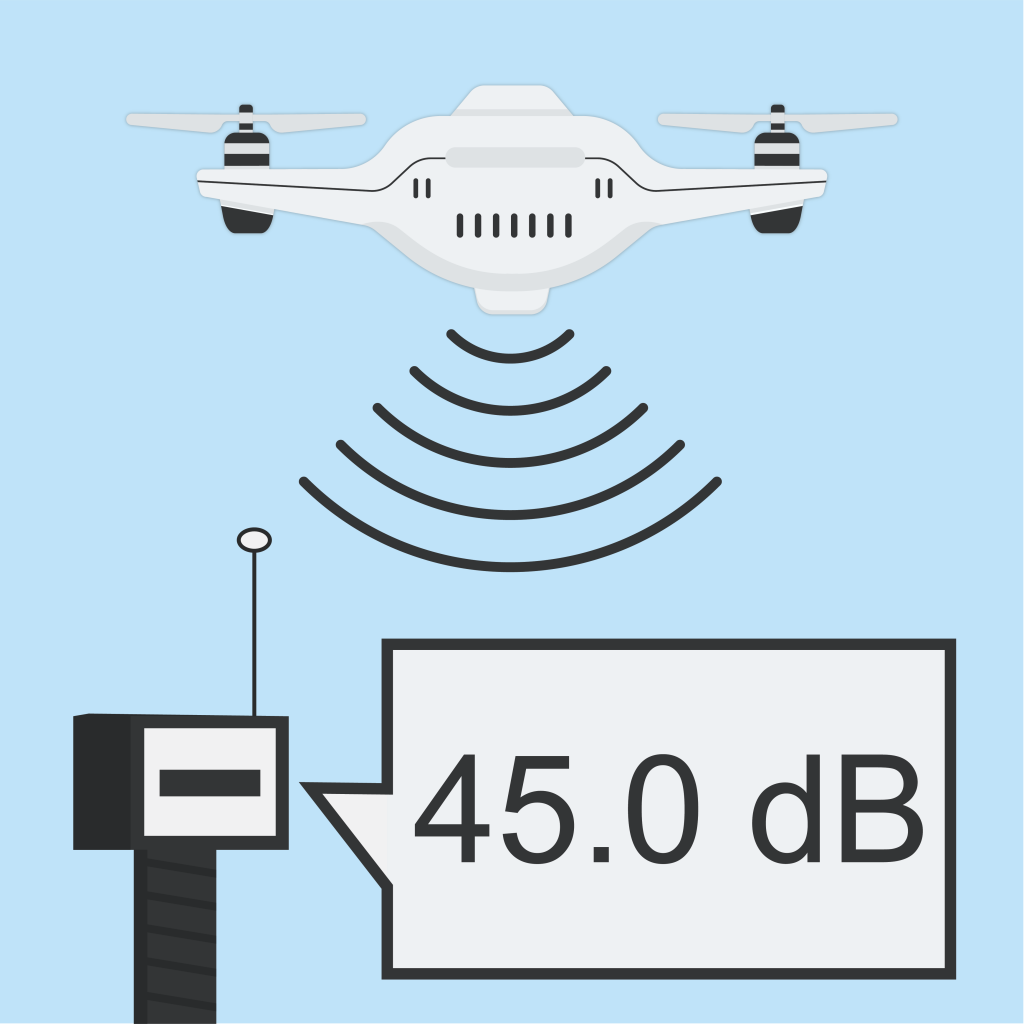
Airports that would like to implement noise mitigation strategies may do so by developing noise abatement procedures such as preferred flight corridors, preferential runway use programs, voluntary time-of-day restrictions, run-up policies, flight path rotation programs, or programs that promote the use of quieter aircraft. To utilize these procedures most effectively, airport staff should monitor their performance – whether pilots comply with a noise abatement procedure. Monitoring noise abatement procedures not only provides oversight and improvement of the procedures, but also provides a mechanism to engage pilots and community members on aircraft noise-related matters.
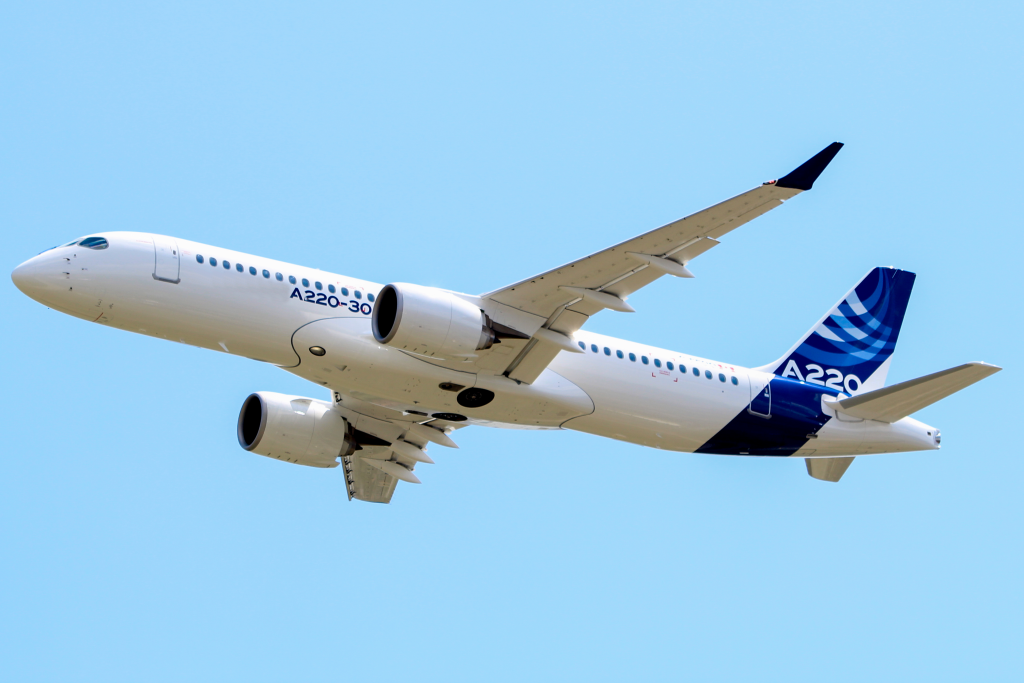
L&B has helped airports build airport noise management programs by assisting with the selection and acceptance of noise and operations monitoring systems and developing noise abatement procedure monitoring and reporting . L&B also provides airports with public outreach services to engage the public with the publication of reports, preparation of aircraft noise analysis, and presentations during public meetings.
The Chicago Department of Aviation (CDA) has had long-standing noise management programs at both Chicago O’Hare and Midway International Airports. Their approach and collaborative relationship with the community Noise Commissions is consistently referred to as the gold standard for effective aircraft noise programs in the industry. The CDA addresses the issue of aircraft noise through four focus areas; Abatement, Mitigation, Monitoring, and Outreach. To date, the CDA has spent over $1 billion on noise management efforts at O’Hare and Midway. Since the inception of their programs, both the CDA and local communities have relied heavily on L&B’s noise management program services. L&B provides ongoing support with these measures including technical noise support, managing the day-to-day functions of their airport noise management system, noise abatement adherence reporting, and extensive community outreach through participation of more than 50 public meetings annually. L&B is also supporting the CDA’s redevelopment of their Fly Quiet Program which will utilize a scheduled rotation of runway utilization and flight paths in the attempt to better balance aircraft noise over the airport’s surrounding communities.
The link to the Primer and appendices can be found at the link below:
Primer and Framework for Considering an Airport Noise and Operations Monitoring System
Everyone on the LAB Team would thank outgoing staffer, Belle Kendrick, for her design and layout contributions to the L&B LAB Brief. Belle has played an important role in our growth and constant improvement; we would like to wish her all the best in the next chapter of her career.
1 ACRP is an industry-driven research program that is authorized by Congress, sponsored by the Federal Aviation Administration (FAA), and managed by the Transportation Research Board (TRB). The ACRP’s objective is to solve common airport problems with unbiased reliable research.
2 The Federal Aviation Administration NES was a multi-year effort to review the agency’s noise policy and to quantify the impacts of aircraft noise exposure on communities around commercial airports in the United States. The survey findings showed that nearly 66 percent of the respondents were highly annoyed at 65 DNL. This is significantly higher than the 14 percent of highly annoyed population finding from the Schultz curve in 1970 that helped establish the FAA’s existing noise policy.
What is the L&B LAB?
The LAB is Landrum & Brown’s research and development unit. Our mission is to harness decades worth of industry knowledge and expertise to develop innovative solutions that support our clients along with promoting industry thought leadership.
This document was prepared by Landrum & Brown, Inc. | Richard.Barone@landrumbrown.com
Sign up to receive our next L&B LAB in your inbox!

